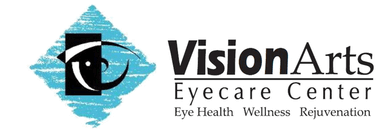1) Please describe what the Optomap is used for and give a basic sense of how it works.
The Optomap ultra-wide field retinal imaging device takes a panoramic digital image of the retina using laser technology. In mere seconds, it provides an in-depth view of the retinal layers where disease starts. A permanent photographic record is created for the medical file, which provides comparisons for tracking and diagnosing potential disease. This allows the doctor to review each patient’s retinal image with them during their exams.
2) What components, or how much of the retina, does this look at and give imaging for?
The optomap captures over 80% of your retina in one panoramic image while traditional imaging methods typically only show 15% of your retina at one time.
3) What types of eye diseases and disorders can be discovered?
Signs of Age-related Macular Degeneration, Diabetic Retinopathy, Glaucoma, Retinal Detachment, Hypertension, Ocular Melanoma can be detected with the Optomap. You retina is the only place in your body where blood vessels can be seen directly with such clarity. So in addition to eye conditions, signs of stroke, heart disease, hypertension, diabetes, and other systemic diseases can also be detected.
4) What is it about this particular technology that you find most exciting; the component that made you feel you need to invest in this for your practice?
The most exciting aspect of the Optomap is that it provides a better alternative to dilating the eyes for examination and preserves a digital image for future review. Everyone knows an image (picture) is worth a thousand words or handwritten drawings. The ability to provide the best care in the world for my patients; improve our efficiency in doing so; and maintaining a high tech reputation in the process are the attributes of the Optomap that made this investment easy.
5) Can you describe the patient experience when using the Optomap?
The optomap scan is quick and completely painless. To capture the image, the patient looks into the device one eye at a time. A comfortable flash of light flashes as the image of the retina is taken. Dilation drops are not required and the patient experiences no side effects.
6) Do the patients that walk through your doors day in and day out appreciate the upgrade in technology?
Our patients are very appreciative of this alternative to dilation. Not only is the optomap a more thorough method for checking the health of the eyes, the patient doesn’t have to endure the discomfort that often accompanies dilation, including stinging or burning, blurred vision, and light sensitivity.
7) How does this technology improve comprehensive eye exams compared to the days when we did not have Optomap Retinal Imaging?
First of all, it saves a great deal of time for the patient and our doctor. Secondly, it does a better job assessing the inside of the eye. Unlike dilation or any other retinal imaging device, Optomap allows the doctor to see over 80% of the retina, which helps him detect problems more quickly and easily. It also allows the digital image to be reviewed with the patient and saved for future review and comparisons. Last, but not least, it does not interfere with vision testing, contact lens evaluation, or the selection of new glasses or sunglasses. These are common problems with dilation.
8) To what patients do you recommend using the Optomap?
Every patient can benefit from the Optomap retinal screening.
9) Are there certain feelings or vision issues that a person may notice that would point to the need for retinal Imaging?
Every patient needs to have a thorough retinal screening during their yearly visit. Many health problems and eye diseases have no warning signs or symptoms, but can easily be detected with the Optomap. For patients that have an eye disease or systemic disease, the Optomap offers several different scan settings that assist the doctor in performing more frequent scans to monitor the progression of the disease.
10) Can you share a particular story, in which by using the Optomap, you were able to detect and treat a disease that would have otherwise gone undetected?
My most heartfelt story took place almost 10 years ago. Upon examining a 50 year old female, I became concerned about the blood vessels in her eyes. I was a little puzzled by their appearance, but I was uncertain to the underlying cause. I explained my findings and arranged for her primary physician to see her immediately for some blood work. Unfortunately, she was diagnosed with stage 4 breast cancer and began treatments immediately. She returned to my office 2 years later with hugs and smiles because “you and the Optomap saved my life”. Fortunately, she lived almost the full 10 years and just recently passed away. None of this would have been possible without the panoramic digital image provided by the Optomap.
11) Why did you choose this supplier to purchase this particular equipment?
Optos is the only supplier of this technology.
